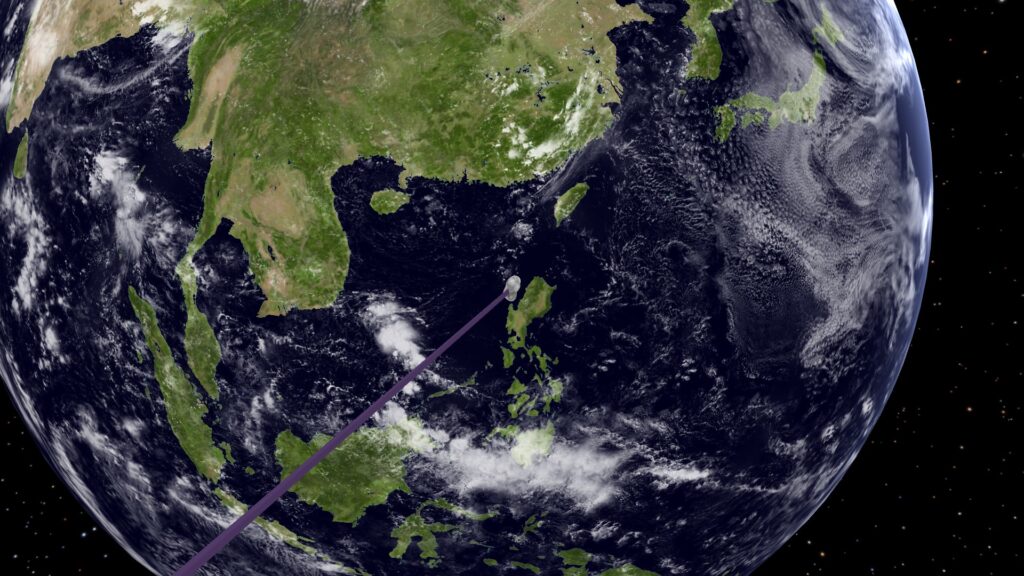This video tells in detail about the Kamoʻoalewa asteroid, which is a quasi-satellite of our planet. The complex and intricate trajectory of this asteroid relative to the Earth is clearly shown.
This asteroid is quite small. Its diameter is estimated at several tens of meters. It does not pose a danger to the Earth, since the risk of its collision with our planet is practically zero.
The size of the major semi-axis of the orbit of the Kamoʻoalewa asteroid practically coincides with the size of the major semi-axis of the Earth orbit. However, the orbit of this asteroid is slightly elongated and inclined relative to the Earth orbit. Kamoʻoalewa makes one revolution around the Sun in almost the same time as the Earth. That is, almost in one year. Thus, the Earth and this asteroid are in a 1:1 orbital resonance.
Kamoʻoalewa asteroid is perhaps the best example of a quasi-satellite of the Earth. It does not enter a full-fledged orbit around the Earth to become a real satellite of our planet. Instead, it moves in its orbit around the Sun, but at the same time, it constantly accompanies the Earth. To be more precise, it is always on one side of the Earth. Due to the inclination of the asteroid orbit, it spends half of the year above the plane of the Earth orbit, the other half of the year – under it. Because of this, Kamoʻoalewa trajectory relative to the Earth turns out to be very bizarre. It looks different from different viewing directions. From some angles, the asteroid trajectory resembles an Eight, from other angles it looks like limaçon, and from some viewing directions, the trajectory looks like a trefoil.
If observations are made from the surface of the Earth, then the asteroid in one year draws a giant Eight in the sky against the background of stars. The lower part of the Eight is located near the Canis Major constellation with the brightest star Sirius. The upper part of the Eight reaches the bucket of the Ursa Major constellation. The scope of the trajectory is amazing. However, due to the small size of the asteroid, it is a very difficult object to observe, even with the use of the most powerful telescopes.
This asteroid was discovered in Hawaii in 2016. The name “Kamoʻoalewa” in Hawaiian means “oscillating celestial object”. This name is perfect for an asteroid with such a trajectory. Kamoʻoalewa orbit can remain stable for several centuries. There are estimates that it can remain a quasi-satellite of our planet for a million years.
The distance from the Earth to the asteroid is ten times greater than the distance between the Earth and the Moon. During the maximum approaches to the Earth, the Kamoʻoalewa asteroid is 38 times farther from us than the Moon. At the maximum distance from the Earth, it is a hundred times farther than the Moon. It is planned to send a spacecraft to the Kamoʻoalewa asteroid with landing on its surface and collecting samples.
To visually assess how complex and bizarre the trajectory of the Kamoʻoalewa asteroid is relative to the Earth, watch this beautiful video.
Watch the video with subtitles.
Modeling and rendering were performed using own software. The calculations took into account the mutual influence of the Sun, all the planets of the Solar System, the Moon and the asteroid on each other. Relativistic effects were also taken into account in the calculation.
The track ‘I-go-home’ by Koi-discovery sounds in this video. This track was not changed. Link: https://freemusicarchive.org/music/koi-discovery/hypercube/i-go-home/
CC0 1.0 Universal (CC0 1.0) Public Domain Dedication license:
https://creativecommons.org/publicdomain/zero/1.0/





